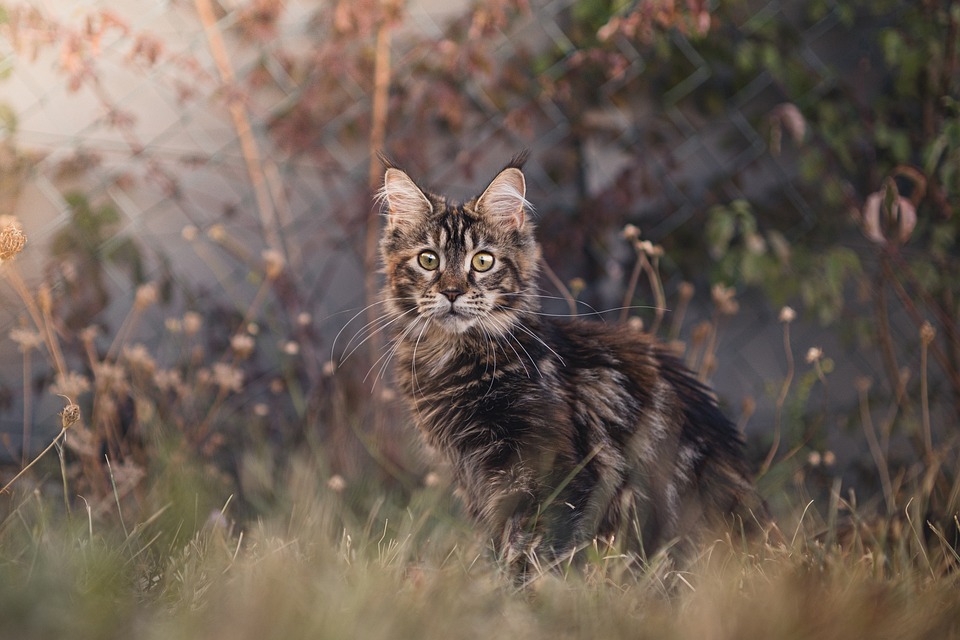Pet-proofing your home is an essential step in ensuring the safety and well-being of your beloved cat. By following these ten essential tips, you can create a secure environment for your feline friend to roam freely without encountering potential hazards.
The first tip is to secure all dangerous chemicals and plants. Store cleaning products, detergents, pesticides, and medications in cabinets or high shelves that are inaccessible to your cat. Additionally, remove toxic plants such as lilies, poinsettias, and azaleas from your home, as these can be harmful if ingested by cats.
Eliminating small choking hazards is the second tip. Keep small objects like rubber bands, paper clips, and coins out of your cat’s reach as they can pose a choking hazard if swallowed. You should also secure electrical cords and blinds to prevent your cat from chewing on them.
Hiding or covering wires and cables is another important tip. Conceal wires and cables behind furniture or use cord covers to deter your cat from chewing on them, which can lead to electrical shock or injury.
Creating safe zones for your cat is the fourth tip. Set up designated areas where your cat can retreat to and feel safe, such as a cozy bed or a cat tree. Providing hiding spots like cardboard boxes or tunnels can also give your cat a place to escape and relax.
Safeguarding windows and balconies is crucial for the safety of your cat. Install secure window screens or mesh guards to prevent your cat from accidentally falling out of windows or balconies. Additionally, ensure that windows and balcony doors are closed when your cat is unsupervised.
Securing cabinets and drawers is another important step. Use childproof latches or locks to keep curious cats from opening cabinets and drawers that contain hazardous items or breakable objects.
Storing food properly is essential to prevent your cat from accessing potentially harmful or toxic substances. Keep human food securely stored in sealed containers and avoid feeding your cat toxic foods such as chocolate, onions, garlic, and grapes.
Regularly checking for hidden dangers is crucial. Inspect your home for potential hazards such as loose nails, exposed wires, or sharp objects that could harm your cat. Additionally, ensure that your cat cannot access appliances like washing machines or dryers, as they may seek warmth inside and get trapped.
Securing trash bins is important to prevent your cat from rummaging through and potentially ingesting harmful items or choking on plastic bags.
Finally, providing enrichment and stimulation is essential to keep your cat mentally and physically stimulated, reducing the likelihood of them engaging in destructive behaviors. Engage your cat in interactive play sessions and provide toys to keep them entertained.
In addition to these tips, there are also some frequently asked questions related to pet-proofing your home:
Q: How can I keep my cat from scratching furniture?
A: Provide your cat with appropriate scratching posts and pads, and regularly trim their nails. You can also use deterrents like double-sided tape or citrus-scented sprays on furniture to discourage scratching.
Q: What should I do if my cat ingests something toxic?
A: Contact your veterinarian immediately. If possible, provide them with information about the substance ingested. They will guide you on the necessary steps to take based on the toxicity level.
Q: Can I use essential oils around my cat?
A: Some essential oils can be toxic to cats. It’s best to consult with a veterinarian before using any essential oils, diffusers, or air fresheners to ensure your cat’s safety.
Q: How can I prevent my cat from jumping on countertops?
A: Create alternative elevated spaces for your cat, such as tall cat trees or shelves, to redirect their natural instinct to climb. You can also use deterrents like aluminum foil or sticky tape on countertops to discourage jumping.
Q: Is it necessary to pet-proof my home if I have an outdoor cat?
A: Yes, it is still crucial to pet-proof your home even if your cat spends time outdoors. When indoors, your cat should have a safe and hazard-free environment to prevent accidents or injuries.
By following these tips and taking necessary precautions, you can ensure that your home is a safe haven for your beloved feline friend. Pet-proofing is a crucial step in providing a secure environment for your cat to live a happy and healthy life.








